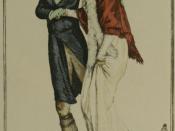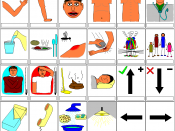Non-verbal communication is used so often that we actually forget that we are using it. It has been defined as communication without words, including apparent behaviors such as facial expressions, eyes, touching and gestures as well as less obvious messages such as dress, posture and spatial distance between two or more people. It provides us with a means for conveying messages without the use of verbal language and also plays a role in the perception of the actual message we are trying to convey.
We do not realise how much we rely on non-verbal communication; the reason for this is due to the fact that most non-verbal communication transpires on a level that is below our conscious awareness. While many aspects of nonverbal communication are culturally specific, some, e.g. facial expressions and gestures, appear to have near universal levels of recognition. It is suggested that many more feelings and intentions are sent and received nonverbally than verbally.
Non-verbal messages are also seen as more genuine because behaviour can not be controlled as easily as spoken words. Perhaps the most common answer for why we use non-verbal communication so often is because words have limitations. It is seen as more effective to describe something non-verbally.
When communicating non-verbally, we tend to use much of our facial expressions to help communicate the message. The reason for this is because it is the most difficult to control. We make facial expressions so automatically that we barely realised what we've just communicated, e.g. there are 23 distinct eyebrow movements, each capable of stimulating a different meaning. If an ironic statement is made with a smile, the receiver knows to find it humorous instead of disconcerting. If we are sending a verbal message intending to deceive and avert our eyes the receiver knows we...



Good WOrk!
Hey love the essay! Keep it up
0 out of 0 people found this comment useful.